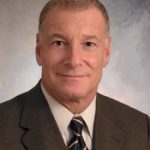
I just finished reading Atul Gawande’s Being Mortal: Medicine and What Matters in the End. It was not a spontaneous read. While it had long been on my “to do” list, I was motivated to begin after my 94-year-old father passed away the week before, in early June.
This book is a must read.
I watched my dad’s suffering from the pain of degenerative arthritis of his spine, and while I was critical of his chronic use of narcotics over decades, he had overall good health until the last months of his life. As with many elderly people, the beginning of the end came with a fall and broken hip.
I was rather “clinical” toward my dad’s end of life. Despite his generally good health and longevity, he persevered through a lot of unhappiness in his life and had several “opportunities” to die over the final year or so of his life, with repeated falls and hospitalizations. Yet, similar to many of the stories in Gawande’s book, he had not been ready to die.
My interpretation was that he had been afraid to die, but I was wrong.
He maintained control and dignity to the end. I didn’t realize the full circle of his life until the meaningfulness of the military honor guard at his funeral. He was immensely proud of his service to our country as a WWII bomber pilot, but rarely spoke of the experience. In an era before the concept of PTSD, his generation internalized the emotional trauma of war.
Similarly, he internalized numerous other traumas, some perceived as personal failures, and he fought to the end to help control the fate of his family. He was not perceived as a particularly powerful man, but his strengths included the ability to submit to, as well as to control, his destiny.
Gawande’s book was inspired by both his family’s stories and those of several patients. He begins with his grandfather, who lived with his family to the age of nearly 110, and concludes with the death of his middle-aged father. Gawande’s major focus is how the inevitability of death has been subverted by modern medicine’s attempt to prolong life to the end rather than to enhance quality of life to the end.
My dad’s last year or so mirrored many aspects of Gawande’s reflections. I now recognize the most important aspects of my dad’s decisions. He was in and out of the hospital for the past year, but refused to be placed in a nursing home or assisted care. He wanted the control of living at home and while, at times, he required an assistant due to impaired mobility, he disdained the requisite. He wanted independence and control.
After his final fall and hip surgery, he despised the rehabilitation facility, despite its quality of care, for the absence of quality of caring. He was a resident (an “inmate” according to him), and not an individual. He became dependent. Interestingly, he preferred the hospital to rehabilitation. It may have been the comfort and interactions of more frequent visits by physicians and staff. There, he never felt alone.
Gawande enumerates the cost of dying in our society. Dad’s final weeks, in particular, bore these observations out. After his fall and surgery to repair the hip, he was sent to rehab. He was re-hospitalized three times. Despite having DNR orders, he chose to be intubated for stridor and was on a ventilator for three days. After extubation he immediately asked, “What’s for lunch?” and, then, promptly aspirated. He was too weak to rehabilitate and lost his ability to swallow. At that point, he began to recognize the end. He was fortunate to have a magnificent internist who supported all of his decisions over the past decades and, with the family, encouraged hospice.
Dad spent his last week at home and was made comfortable. He was able to wrap up his affairs and tried his best to ensure the family’s well being. For me, this book brought more closure to his death than the funeral. I realized that my interpretation that he had been afraid to die was wrong. He withstood the pain to bring the closure he needed to his life’s story.
Stephen B. Hanauer, MD, FACG, President, American College of Gastroenterology

